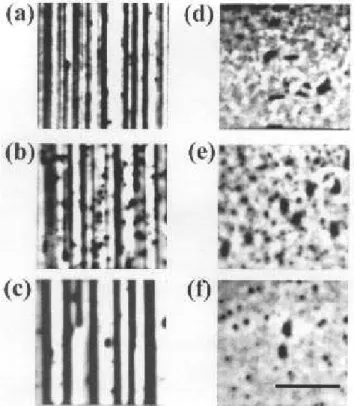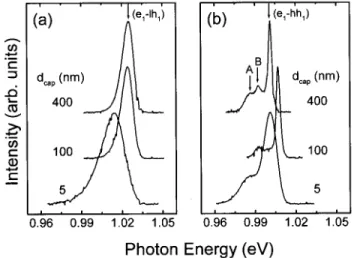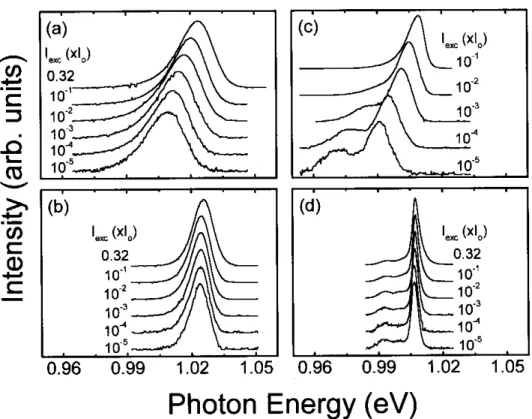Braz. J. Phys. vol.29 número4
Texto
Imagem



Documentos relacionados
of an reectance anisotropy is the surface region, RA spectra can be used to clarify the atomic structure and the stoichiometry of a surface.. It turns out that dimer
Using the temperature dependence of the interminiband absorption, energy loss and relaxation rates can be determined.. A vertical electric eld leads to negative dierential
Like in the case of the left kinks, the rather high migration barrier of 2.03 eV for the right kinks is associated with the drastic bond distortions and malco- ordination of atoms
Using a variational technique in momentum space and within the eective mass approximation, Chung and Chang [10] have calculated the eects of well width and Al molar fraction in
For GaN/AlGaN heterojunction we compare our theoretical results with recent experimental data and a good agreement is found when the electron eective mass is taken as m b = 0:223m
The spatial connement of carriers, the strong va- lence band mixing and conduction-valence band cou- pling lead to the observed complex subband dispersions with very interesting
Comparying with Fig.1, we already see that both dimerization procedures, although leading to qual- itatively similar electronic structures in absence of AC elds, imply in
It was found that the width of the PL spatial prole follows a linear function of temperature, but a change in slope by a factor of 2.6 is observed at about 200 K, indicating a change